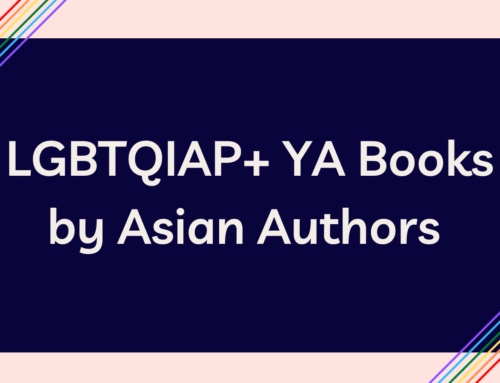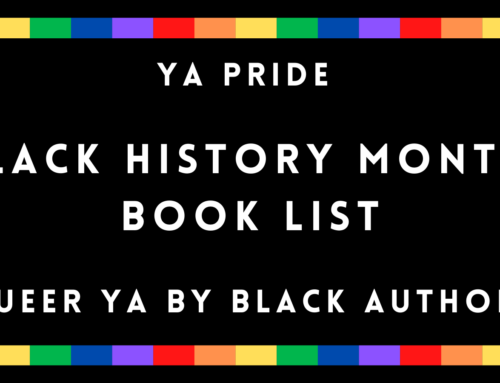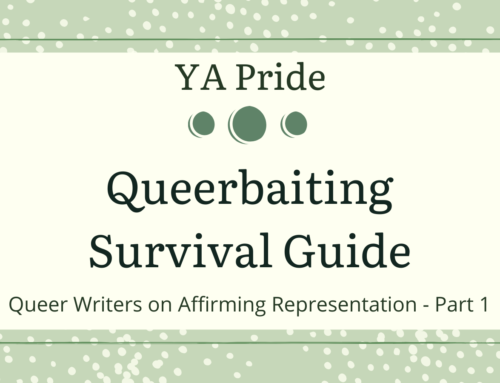Aromantic Spectrum Awareness Week Series
by Claudie Arseneault
There is no asexual or aromantic representation out there.
Here it is. The greatest illusion of asexual and aromantic representation.
We all know lies often repeated embed themselves in our collective knowledge and pass as truth. This single sentence is what brought about the Aromantic and Asexual Characters Database.
Again and again and again, I would read these words, and they dragged on my soul. I believed in them for so long–believed that googling extensively to find stories with asexual characters would lead me nowhere, that I didn’t exist in fiction (did I even exist at all?) and that no one cared. The situation was even worse for aromantic characters. When I asked about them, I often received only recommendations for books with asexual characters with an undetermined romantic orientation. Worse, some even had alloromantic MCs! Neither really touched upon what it was like to be aromantic, except at times in passing. This knowledge sat heavy with me. It felt like the only books people recommended had been deconstructed by my community as potentially harmful, but that these were all we had, and I should be happy with it.
There is no asexual or aromantic representation out there.
Those words only ring true within a certain context. Once I started moving around indie spaces, I witnessed the effervescent creativity of my fellow ace writers, discovered their work, and it had so much ace representation! It was out there, waiting for me. So I read, and saw my experiences mirrored, over and over, sometimes strikingly different yet always familiar, connective. I did exist, away from mainstream media where the pressure of allonormativity was weaker and writers had more freedom.
There is no asexual or aromantic representation out there.
The words still dragged on my soul. No representation? Didn’t we count–we, the indies writing ownvoices stories in the shadows, baring our experiences in a wide variety of formats and genres? I knew, of course, why we didn’t make the cut: the “out there” really means “within mainstream media and traditional publishing”. Indies often aren’t treated as part of the publishing landscape–we’re never considered ‘the first’, not even when we’ve been around for years. The erasure and disdain hurt, moreso because I knew many who still believed those words, who would be discouraged by them and not search for themselves.
There is no asexual or aromantic representation out there.
It’s a pervasive idea–one that has evolved to “very little representation out there”–but gets perpetuated even today, preluding lists of examples that are too-often all trad publishing. But I’m here to tell you: there are at least 300 different aromantic or asexual characters out there, only counting prose, only counting those I’ve heard of. I have no doubt this number will grow past 400 before the year is over. While only a limited number of those are readily available in print bookstores and libraries, traditional publishing is finally catching up and that number is growing.
There is no asexual or aromantic representation out there.
There is a lot of asexual and aromantic representation out there.
And I’m here to help you find it!
This is why I created the asexual and aromantic characters in prose fiction database (“the AroAce Database”) : as a shield against that lie.
Once I had set myself to the task, I needed to decide what information I wanted recorded in the database. What struck me is that while we were all looking for representation, we’re a community with a wide variety of experiences, and none of us wanted quite the same thing. I would hear people complain about a lack of happy-and-single aroaces who firmly wanted nothing to do with sex and romance while others craved acespec representation and asexual characters in relationships and enjoying sex! Both these groups were convinced the other part of the community had it easy (they were both wrong and right; speculative fiction slants towards aroaces while contemporary and romance has a larger proportion of alloromantic and spectrum rep but few aroaces).
This led me to focus on marking specific experiences within the large communities of asexual and aromantic people. I would search for the specific ace label used, mark down romantic relationships and QPRs, kept a column for gender, etc. This way, if someone wanted an ace f/f romance, they could easily filter out everything else. I also included story length to allow people to discriminate between quick reads and long, more demanding novels. It became very easy to narrow down the search according to your own personal set of criteria.
I decided not to include disability and races–I didn’t know how to label these in categories that would remain easily searchable without lumping things I shouldn’t together and flattening complex topics, and I was feeling terribly out of my depth and lane. This is, by far, the decision I regret the most. They should have been there from the start, and going back to add these on 300 characters is a lot more work than keeping track as I went would have been. I’ve made notes of those I knew in the representation notes, but this is what my next major update is about. I’ve grown a lot over the last years, and I feel better equipped to handle this (and I have a stabler income to pay the disabled aroaces of colour to check my categorization, too).
My database has its faults, but I love it deeply and I’m incredibly proud of the work I’ve achieved with it. While maintaining it takes considerable time, it gives me an overview of the representation out there, puts me more in touch with my community, and lets me discover and promote their work in addition to mine. As time passes, it even allows me track how our stories have evolved over time. It’s an incredible tool bound to become better as time passes and I add more features to it or around it.
Things have picked up quite a lot for asexual representation in the last two years. I’m convinced 2019 will see the database break the threshold of 400 characters, and I hope the next two years will see a flourish of amazing aromantic representation as well. Because here’s the thing: 300 is a lot of characters, but it’s also not enough–not enough to cover the wide variety of aro and ace experiences, not enough to explore the intersections of several marginalizations, not enough to provide these stories and characters across many genres, in many formats, many times over. We can still do better. We must.
For now, however, one thing’s sure: there is plenty aromantic and asexual representation already out there, and I can’t wait to keep reading, recording, and writing more of it!
Do you want more aromantic stories? Along with two other amazing arospec editors, Claudie is currently crowdfunding Common Bonds, an anthology of science fiction and fantasy short stories centering aromantic characters in platonic relationships. Check out their kickstarter!
—
 Claudie Arseneault is an asexual and aromantic spectrum writer hailing from Quebec City. Her love for sprawling casts invariably turns her novels into multi-storylined wonders centered on aromantic and asexual characters. Her high fantasy series, City of Spires, started in February 2017, and her latest book, Baker Thief, features a bigender aromantic baker and is full of delicious bread, French puns, and magic.
Claudie Arseneault is an asexual and aromantic spectrum writer hailing from Quebec City. Her love for sprawling casts invariably turns her novels into multi-storylined wonders centered on aromantic and asexual characters. Her high fantasy series, City of Spires, started in February 2017, and her latest book, Baker Thief, features a bigender aromantic baker and is full of delicious bread, French puns, and magic.
Claudie is a founding member of The Kraken Collective and is well-known for her involvement in solarpunk, her database of aro and ace characters, and her unending love of squids. She was long-listed for the 2018 BSFA Awards for her essay Constructing a Kinder Future in Strange Horizons. Find out more on her website!






